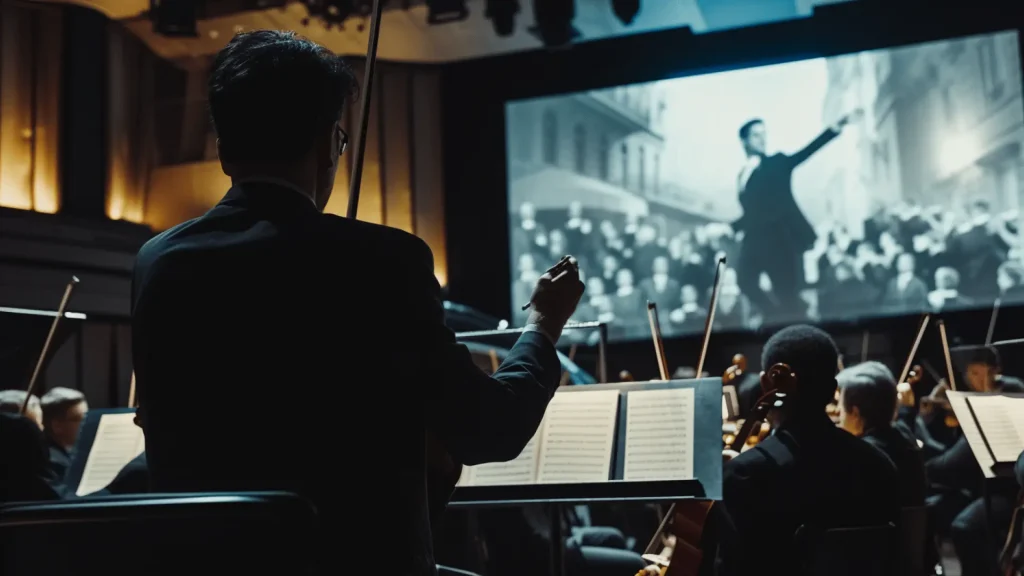Exploring the Impact of Soundtracks on Movie ExperienceExploring the Impact of Soundtracks on Movie Experience
Soundtracks play a vital role in shaping the movie-watching experience. The music, whether orchestral scores or popular songs, adds an emotional layer to the narrative, guiding the audience’s feelings and enhancing the storytelling. This article delves into various aspects of how soundtracks impact movies, including emotional engagement, character development, cultural context, and the overall cinematic experience.

Emotional Engagement Through Music
Music has a profound ability to evoke emotions, and in movies, it serves as a powerful tool to amplify the emotional impact of scenes. A well-composed soundtrack can make a thrilling scene more intense or a sad moment more poignant. For instance, the haunting melody in “Schindler’s List” enhances the film’s tragic atmosphere, making the audience feel the weight of the historical events portrayed.
Soundtracks also use leitmotifs—recurring musical themes associated with particular characters or ideas. These motifs help to build an emotional connection with the audience. In “Star Wars,” John Williams’ use of distinct themes for characters like Darth Vader and Luke Skywalker helps viewers instantly recognize and emotionally connect with them whenever the music plays.
Furthermore, the timing and placement of music are crucial. A sudden musical cue can startle the audience, adding to the suspense in a horror movie. Conversely, a gentle lullaby in a dramatic scene can evoke tears. Thus, soundtracks are essential in guiding the audience’s emotional journey through a film.
Enhancing Character Development
Soundtracks significantly contribute to character development by providing additional layers of meaning to their actions and personalities. Music can highlight a character’s inner thoughts and feelings that may not be explicitly stated in the dialogue. For example, in “The Godfather,” the recurring use of the main theme underscores Michael Corleone’s transformation from reluctant outsider to powerful mafia leader, adding depth to his character arc.
Characters often have their unique themes or musical styles that reflect their traits. In “Pirates of the Caribbean,” the adventurous and swashbuckling score associated with Jack Sparrow helps to define his quirky and daring personality. This musical identification helps the audience to understand and relate to characters on a deeper level.
Moreover, the evolution of a character’s theme throughout a movie can indicate their growth or change. As characters face challenges and evolve, their associated music may shift in tone, reflecting their development. This subtle musical storytelling enriches the narrative, making character arcs more compelling and emotionally resonant.
Cultural and Historical Context
Soundtracks can provide cultural and historical context, enriching the storytelling by situating the narrative within a specific time and place. By using traditional instruments, musical styles, or popular songs from a particular era, filmmakers can create a more authentic and immersive experience for the audience. For instance, the use of 1960s rock music in “Forrest Gump” not only sets the period but also evokes the cultural backdrop of the Vietnam War and the counterculture movement.
In movies set in different cultures or historical periods, the soundtrack can introduce audiences to diverse musical traditions and instruments. This not only enhances the authenticity of the film but also broadens viewers’ musical horizons. For example, the use of traditional Indian music in “Slumdog Millionaire” provides a rich cultural texture that complements the story’s setting in Mumbai.
Additionally, soundtracks can serve as a bridge between the past and the present. By blending contemporary music with historical themes, filmmakers can make historical events more relatable to modern audiences. This blending of old and new helps to create a dynamic and engaging cinematic experience that resonates across different generations.
Impact on the Overall Cinematic Experience
The overall cinematic experience is greatly enhanced by a well-crafted soundtrack. Music sets the tone of the film right from the opening credits, preparing the audience for the journey ahead. An iconic theme, like the one from “Jaws,” can become synonymous with the movie itself, creating a lasting impression that endures long after the credits roll.
Soundtracks also play a crucial role in pacing and narrative structure. Upbeat, fast-paced music can heighten the excitement of action sequences, while slow, melancholic scores can underscore the gravity of dramatic moments. This dynamic use of music helps to maintain the audience’s engagement and emotional investment throughout the film.
Moreover, memorable soundtracks contribute to the film’s legacy, often becoming cultural touchstones. Scores from movies like “The Lord of the Rings” and “Harry Potter” are instantly recognizable and evoke a sense of nostalgia and connection among fans. These musical pieces transcend the films, becoming part of popular culture and reinforcing the movies’ impact on audiences worldwide.
The Role of Sound Design and Foley
While soundtracks play a significant role in movies, sound design and Foley also contribute to the overall auditory experience. Sound design involves creating the auditory elements that accompany the visuals, from the whoosh of a sword to the ambient noises in a bustling city. Foley artists meticulously recreate everyday sounds, such as footsteps or rustling clothes, to enhance the realism of scenes.
These sound elements, when combined with the soundtrack, create a rich, immersive environment that draws the audience deeper into the story. For example, in “Jurassic Park,” the combination of John Williams’ score with the realistic roars and footsteps of the dinosaurs creates a sense of awe and tension. The sound design works in harmony with the music to build suspense and excitement, making the prehistoric creatures come to life on screen.
Moreover, sound design can also play a narrative role. Unique soundscapes can signal changes in the environment or mood, guiding the audience’s perception of the scene. In “Blade Runner 2049,” the futuristic and sometimes eerie sound design complements the film’s dystopian setting, enhancing the overall atmosphere and helping to convey the story’s themes of isolation and artificiality.
The Influence of Iconic Composers
Iconic composers have left an indelible mark on the world of cinema, with their contributions often becoming as celebrated as the films themselves. Figures like John Williams, Hans Zimmer, and Ennio Morricone have created some of the most memorable and influential soundtracks in movie history.
John Williams’ work on films such as “Star Wars,” “Indiana Jones,” and “E.T. the Extra-Terrestrial” has become legendary. His ability to create memorable and emotionally powerful themes has set a benchmark for cinematic music. Williams’ scores are not just background music; they are integral to the storytelling, providing emotional depth and continuity.
Hans Zimmer’s innovative approach to composition has also revolutionized film music. Known for his work on films like “Inception,” “The Dark Knight,” and “Interstellar,” Zimmer blends traditional orchestral music with electronic elements to create unique soundscapes. His music often pushes the boundaries of what film scores can achieve, enhancing the narrative with a sense of scale and intensity.
Ennio Morricone’s compositions, particularly for Westerns like “The Good, the Bad and the Ugly,” are celebrated for their distinctive style and emotional impact. Morricone’s use of unconventional instruments and vocal elements created a unique musical language that has influenced countless composers and filmmakers.
These composers have demonstrated that music is not just an accompaniment to the visuals but a crucial component of the storytelling process. Their work has shown how powerful and evocative soundtracks can elevate a film from good to great, leaving a lasting impression on audiences.
